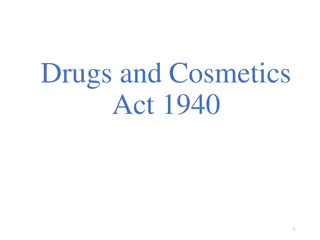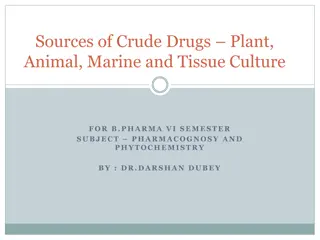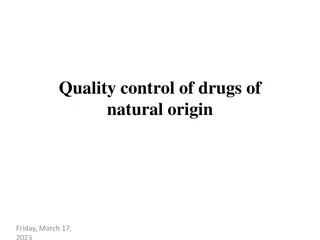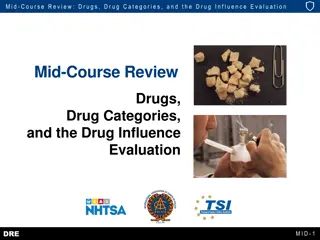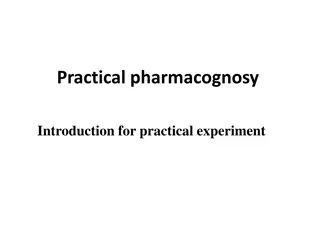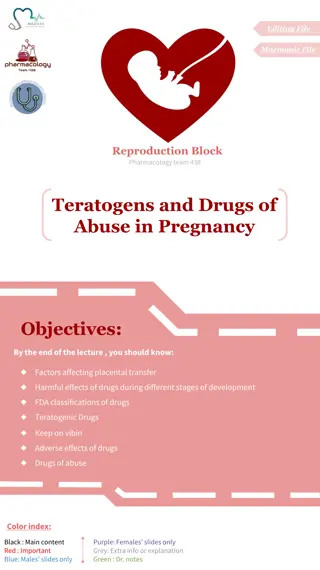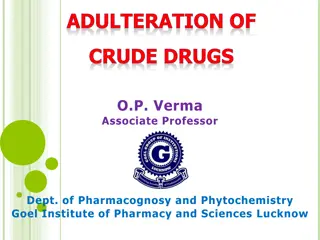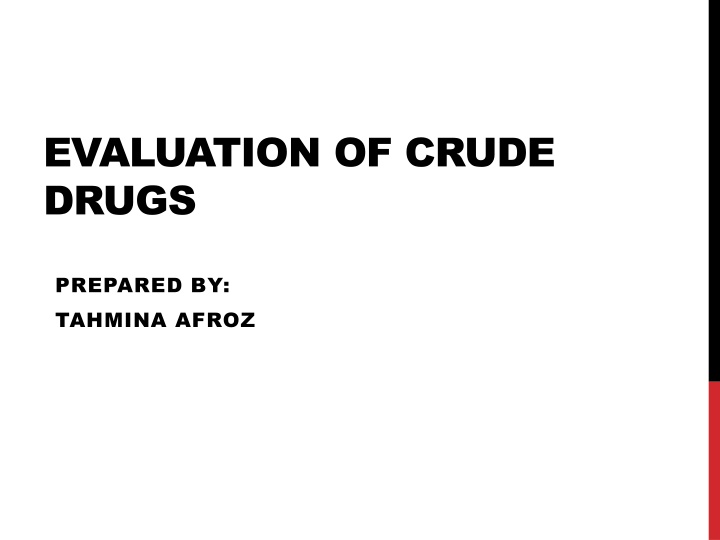
Evaluation of Crude Drugs: Methods and Importance
Understanding the evaluation of crude drugs is crucial for determining their identity, purity, and quality. Various methods such as organoleptic, microscopic, physical, and chemical evaluations play a key role in ensuring the effectiveness and safety of drugs. It is essential to assess commercial varieties of crude drugs before or after purchase. Explore more about the significance and techniques involved in drug evaluation.
Download Presentation

Please find below an Image/Link to download the presentation.
The content on the website is provided AS IS for your information and personal use only. It may not be sold, licensed, or shared on other websites without obtaining consent from the author. If you encounter any issues during the download, it is possible that the publisher has removed the file from their server.
You are allowed to download the files provided on this website for personal or commercial use, subject to the condition that they are used lawfully. All files are the property of their respective owners.
The content on the website is provided AS IS for your information and personal use only. It may not be sold, licensed, or shared on other websites without obtaining consent from the author.
E N D
Presentation Transcript
EVALUATION OF CRUDE DRUGS PREPARED BY: TAHMINA AFROZ
EVALUATION OF CRUDE DRUGS Drug evaluation may be defined as the determination of identity, purity and quality of a drug. Identity identification of biological source of the drug. Purity the extent of foreign organic material present in a crude drug. Quality the quantity of the active constituents present. It is necessary to evaluate all commercial varieties of crude drugs before or after being purchased.
METHODS OF DRUG EVALUATION The evaluation of a drug is drug done by studying its various properties. Organoleptic evaluation The various evaluation system are: Biological evaluation Microscopic evaluation (1) Organoleptic evaluation (2) Microscopic evaluation (3) Physical evaluation (4) Chemical evaluation (5) Biological evaluation Evaluation of drug Chemical evaluation Physical evaluation
ORGANOLEPTIC EVALUATION This refers to drug evaluation by means of organs of sense and depends on the macroscopic appearance and sensory characters of the drug, such as its gross morphology , shape , size , color and external markings and odour and taste.
MICROSCOPIC EVALUATION This method is done the aid of microscopes and utilizes various microscopic characters of the drugs, such as trichomes, calcium oxalate crystals, starch grains etc. This allows a more detailed examination of a drug and it can be used to identify organized drugs by their known histological characters. Before examination through a microscope the material must be suitably prepared. This can be done by powdering, cutting thin sections of the drug or preparing a macerate.
PHYSICAL EVALUATION The physical evaluation of crude drugs is accomplished by the determination of various physical constants using various physico- chemical techniques. Physical contents such as elasticity in fibres, viscosity of drugs containing gums, swelling factor for mucilage containing materials, congealing point of volatile and fixed oils, melting and boiling points and water contents are some important parameters used in the evaluation of drugs. Ultraviolet light is also used for determining the fluorescence of extracts of some drugs.
CHEMICAL EVALUATION Determination of the active constituent in a drug by chemical tests is referred to as chemical evaluation. The following are various methods of chemical evaluation. Instrumental methods Chemical tests Individual constituent chemical tests Micro chemical tests
BIOLOGICAL EVALUATION This method is very useful in determining the potency of drug sample. It is employed when the drug cannot be evaluated satisfactorily by chemical and physical methods. In this method, the response produced by the test drug on a living system is compared with that of the stranded preparation. Since living organisms or their isolated living tissue are used, this also called the biological method or bioassay. Many drugs, particularly the antibiotics, toxins and toxoids and also vitamins are assayed by this method.


